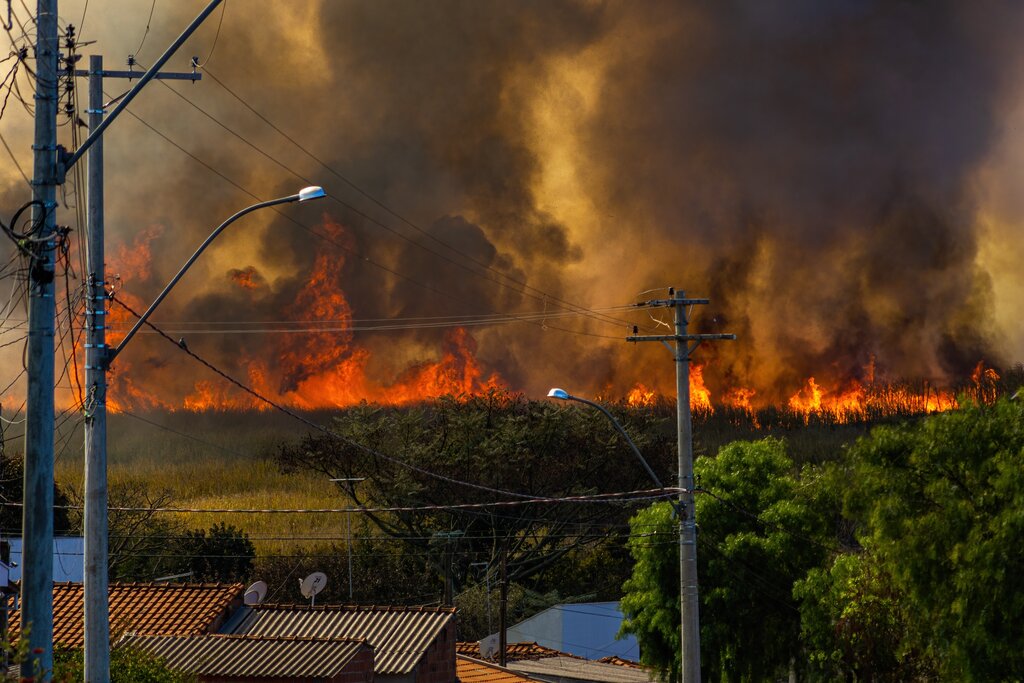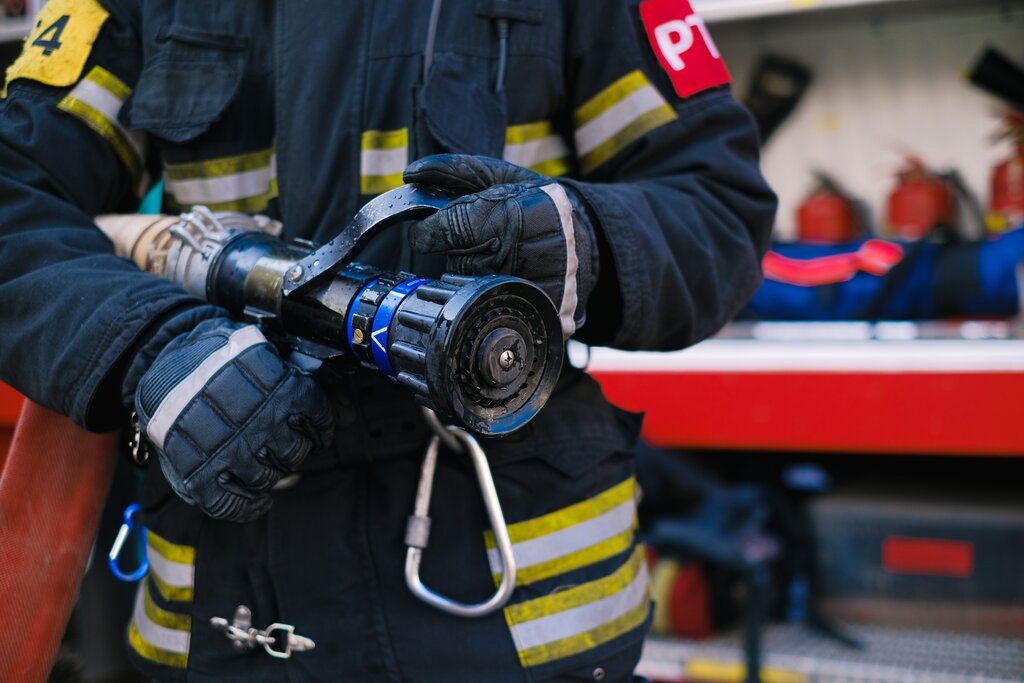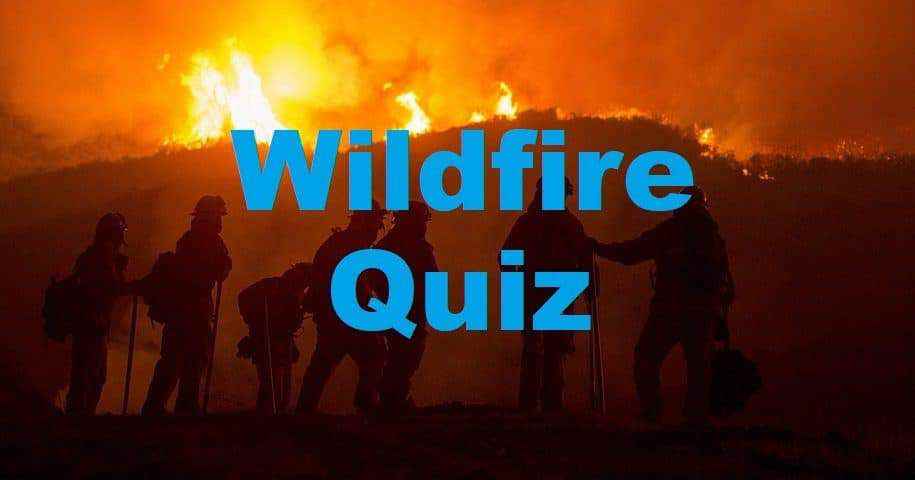
Test Your Knowledge of Fire Protection
For the past several years, we at Frontline Wildfire Defense have been providing you with news and information about wildfires, as well as fire protection for your home and property. Have you been paying attention?
Test your knowledge with our wildfire quiz:
#1. Which part of a wildfire causes the most home destruction?
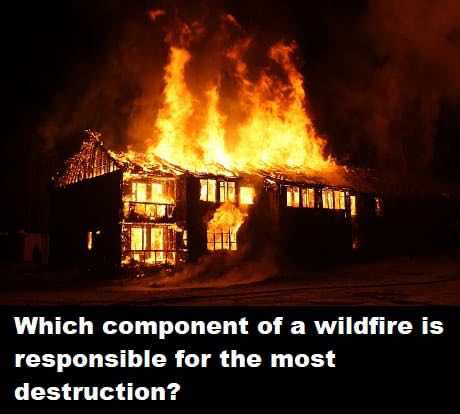
A. The fast-moving wall of flames
B. The smoke
C. The embers
D. The water used to extinguish the fire
E. Both A and B
Okay, so we started out with an easy one. If you’ve learned anything from Frontline over the years, it should be that embers are the most destructive part of a wildfire. So the answer is C.
Embers can glow as hot as the fire from which they arise, and are light enough to be carried by the wind for long distances without being extinguished. They’re the primary reason properties go up in flames whenever a wildfire is nearby.
Not only can these embers be carried to the outside of your property, but they can make contact with the inside by floating through vents, windows or crawl spaces. As a result, they can ignite any and all flammable objects you own, including the house itself.
That’s why a fire protection system that guards against embers is vital.
#2. Which demographic group is the most vulnerable in a wildfire?

A. The elderly
B. Young children
C. Asian Americans
D. The morbidly obese
E. Everyone is equally vulnerable
While children are indeed vulnerable in a wildfire, it is in fact the elderly who are more likely to succumb to its ravages.
According to the U.S. Fire Administration (USFA), people ages 85 or older have the highest fire death rate (39.5). They are 4.1 times more likely to die in a fire than the total population. (The answer is A.)
In fact, for all of us, the risk of dying in a fire increases significantly as we age. So fire protection becomes increasingly important. Knowing what to do in a fire emergency can make a big difference. If there is a fire in your home, you have less than three minutes to get out, so being prepared ahead of time is critical.
Of course, Asian Americans are no more vulnerable than any other population. And while the morbidly obese undoubtedly have issues, wildfire vulnerability is not necessarily one of them.
#3. Which part of a wildfire is the most deadly for animals?

A. The fast-moving wall of flames
B. The smoke
C. The embers
D. The water used to extinguish the fire
E. Both A and C
Smoke is, far and away, the biggest killer of animals in a fire event. So the answer is B. When pets sense fire, they try to hide from it; this can trap them in hard-to-find places, where they eventually perish from smoke inhalation. So it’s important to have a fire protection plan for them.
But air quality can affect your pets, even if the wildfire is not particularly close by. Smoke from fires burning up to 100 miles away can still carry CO2, fine particulates, and other toxic chemicals to your location.
Wild animals don’t just sit there and wait to be overcome by a wildfire. Birds will fly away. Mammals will run. Amphibians and other small creatures will burrow into the ground, hide out in logs, or take cover under rocks. Large animals like elk will take refuge in streams and lakes.
So animals know enough to flee from a wall of flames, and embers are not usually a problem for them. (As far as we know, they’re also not likely to die by fire hose.)
#4. In July 2018, a couple was charged with arson in Colorado’s Lake Christine Fire. How did they start the blaze?
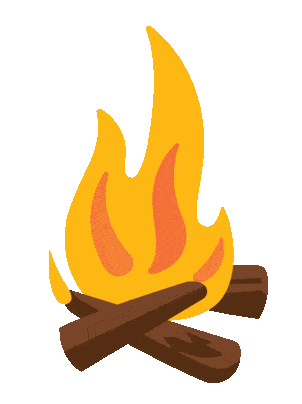
A. They left their campfire unattended.
B. Their tractor malfunctioned.
C. They fired tracer rounds at a shooting range.
D. They intentionally set it.
E. They discarded lit cigarette butts.
The Lake Christine Fire burned a total of 12,000 acres outside Basalt, Colorado, in July of last year. Three homes were destroyed, hundreds of people were forced to evacuate for weeks, but no one was hurt.
The couple who started the blaze had been illegally firing tracer rounds at the Basalt State Wildlife Area shooting range. (The answer is C.) In addition to felony charges of fourth-degree arson, the couple were also charged with violation of a Stage 2 fire ban.
In June of 2019, the couple pleaded guilty to a reduced charge of setting fire to woods or prairie, and the felony arson charges were dismissed. A judge sentenced each of them to 45 days in jail, 1500 hours of community service, $100,000 of restitution and five years of probation.
Answers A, B, D and E are the most common causes of wildland fires.
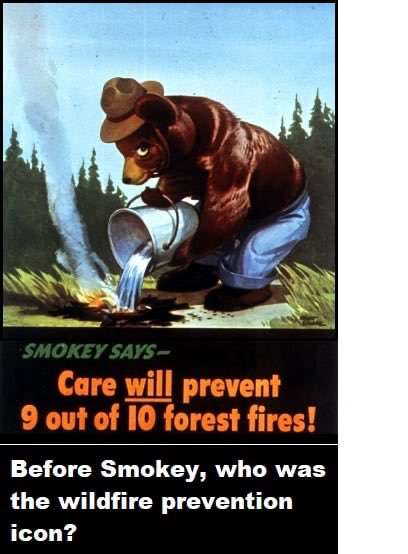
#5. When the U.S. Forest Service first launched its wildfire prevention campaign in the 1940’s, which Disney icon did they use?
A. Mickey Mouse
B. Yogi Bear
C. Jiminy Cricket
D. Bambi
E. Winnie the Pooh
If you chose D, you’ve really been paying attention. In the mid-1940’s, the Disney Studios allowed the forest service to borrow Bambi — the popular animated deer from its highly successful film — but only for one year. After that, a new icon was needed.
Keeping with the forest animal theme, the forest service and the Advertising Council determined that a bear would best represent the fire-prevention campaign, and Smokey the Bear was born.
This year, Smokey is celebrating his 75th birthday. Smokey’s wildfire prevention program is the longest-running Public Service Advertising campaign in U.S. history.
Are you old enough to remember the following PSA from 1970:
#6. What equipment do smokejumpers use to fight wildfires?
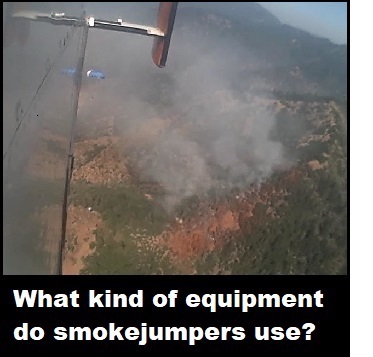
A. Mainly fire hoses and hydrants.
B. Heavy metal: chainsaws, Pulaskis, shovels
C. Drip torches for controlled burns.
D. Portable fire extinguishers.
E. All of the above.
Ever try to jump out of a plane with a fire hose strapped to your back? And, of course, there are no fire hydrants where smokejumpers go. Clearly, the answer is not A.
While drip torches are often used by wildland firefighters for prescribed burns, they’re not part of routine firefighting for smokejumpers.
Portable fire extinguishers could never make a dent in any wildfire large enough to require smokejumpers. So, obviously, the answer is B. The metal tools are used to create fire breaks by separating the black, charred areas from the green.
They dig and hack…they cut the fire off from fuel to keep it from spreading. Wherever the ground is hot, they turn it over and mix it with cool soil. It’s backbreaking work.
#7. What major wildfire policy change did the U.S. Forest Service make in the 1970’s?
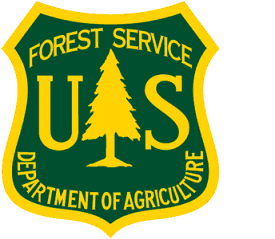
A. They began hiring female firefighters.
B. They started implementing prescribed burns.
C. They moved from total wildfire suppression to wildfire management.
D. They started using smokejumpers.
E. Both B and C
If you answered E, you definitely get a gold star!
After more than 60 years of total wildfire suppression as an official policy, the USFS came to realize that not all wildfire is bad. Biologists convinced them that ecosystems depend on wildfire to survive. So the wildfire policy moved from suppression to management, even including prescribed burns as a means of prevent more extreme fires.
But if you answered A, don’t beat yourself up: this was actually a trick question. Although the USFS did start hiring more female firefighters in the 1970’s, it was not part of their official “wildfire policy.” And Smokejumpers have been used by USFS since 1939.
#8. What rather drastic step have some rescue workers taken when residents refuse to comply with an evacuation order?

A. They’ve dragged them out, kicking and screaming.
B. They’ve asked them to sign a waiver of liability.
C. They’ve issued magic markers and asked residents to write their social security numbers on their limbs and torsos for easy identification of their remains.
D. They’ve turned the fire hoses on them.
E. First B, then D.
Although they may have been tempted to execute some of the other approaches, the answer is in fact C. The “Magic Marker Strategy” was implemented in 2005 by rescue workers in Virginia when stubborn residents refused to comply with a hurricane evacuation order. We understand the tactic was pretty effective.
As far as we can tell, none of the other choices have been attempted.
How’d You Do?
If you answered at least five of the questions correctly, consider yourself an expert on wildfires and fire protection. If not, there’s always time for a refresher.
Sources:
Featured Image: Pixabay

